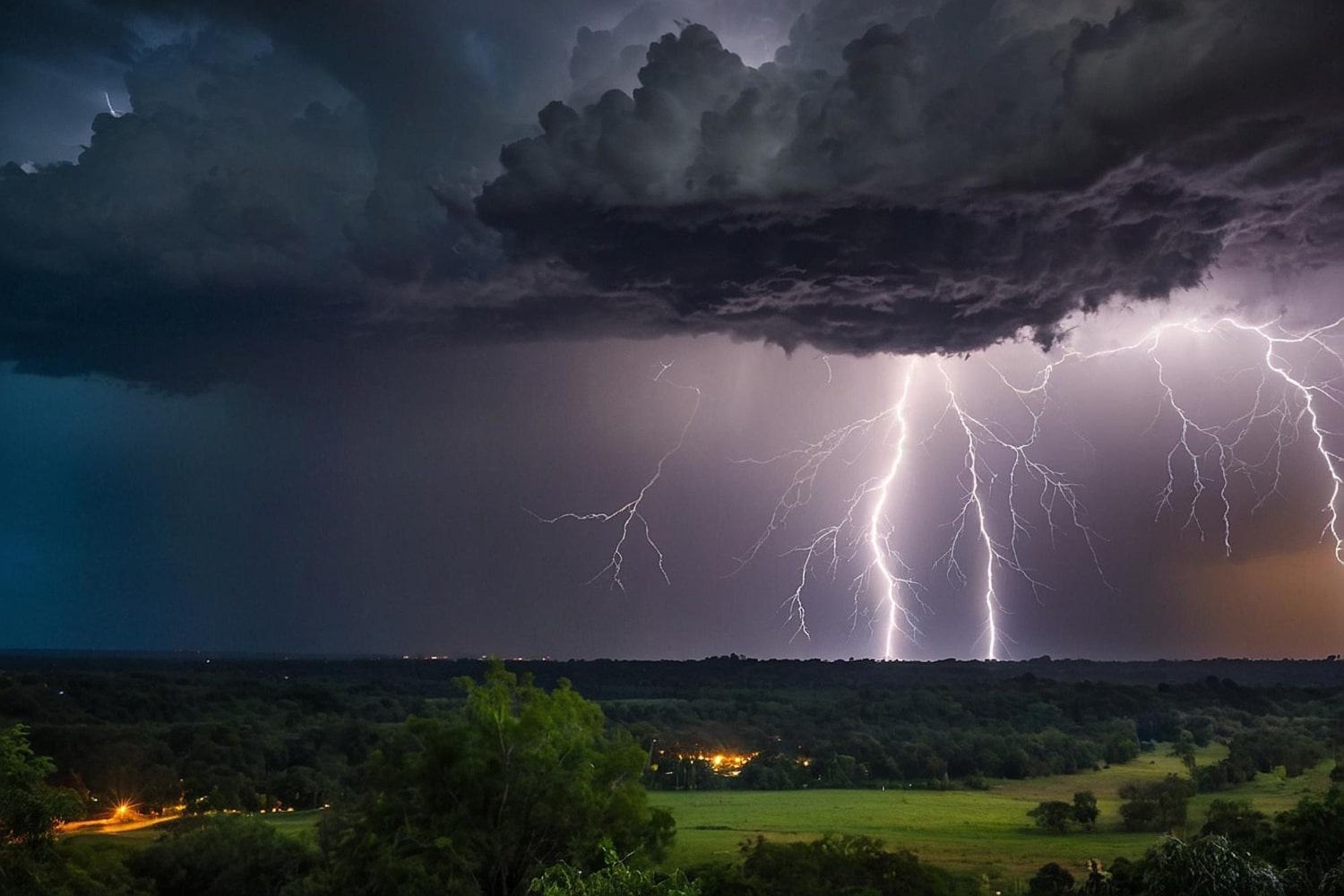Thunderstorms have always fascinated and frightened people, raising numerous questions and emotions. Accompanied by lightning bolts, loud thunderclaps, and heavy rain, they sometimes bring strong winds or hail as well. Although thunderstorms are common in many parts of the world, they conceal many captivating facts you might not know. Understanding how thunderstorms work helps scientists better comprehend atmospheric processes and develop safety systems for buildings and electronics. Below are some of the most interesting and lesser-known facts about thunderstorms that may completely change your view of this natural phenomenon.
- A thunderstorm forms when warm air rises rapidly, cools down, and condenses into clouds. As water particles collide while moving upward, they generate electrical charges. When the difference in charge becomes too great, a lightning bolt occurs. This makes thunderstorms the result of complex processes in the troposphere.
- The highest number of thunderstorms occurs in tropical regions, particularly over the Amazon Basin and parts of Africa. For instance, around Lake Maracaibo in Venezuela, there are over 250 stormy days each year. This phenomenon is known as Catatumbo lightning. It is considered one of the most lightning-prone places on Earth.
- A single lightning bolt can heat the surrounding air to about 30,000 degrees Celsius, several times hotter than the surface of the Sun. This intense heat causes the air to expand explosively, creating a shockwave that we hear as thunder. Since light travels faster than sound, we see the flash before hearing the rumble.
- Ball lightning is a rare and mysterious phenomenon with no universally accepted scientific explanation. It appears as a glowing sphere that can hover in the air or even enter buildings through windows. It often disappears suddenly or explodes without a trace. Very few cases have been reliably documented and studied.
- On average, more than 100 lightning bolts strike the Earth every second. That adds up to over 8 million strikes per day. Most of these occur in remote areas or over oceans, which is why many go unnoticed.
- It is possible for a person to survive a lightning strike, although it is extremely dangerous and often results in severe injuries. The current may pass over the body’s surface or travel through the ground. There are known cases of individuals being struck multiple times in their lifetime.
- Thunderstorm clouds, known as cumulonimbus clouds, can reach heights of up to 20 kilometers. They contain layers of ice, supercooled water, and vapor. These clouds often resemble giant towers growing rapidly in the sky.
- Some airlines avoid flying through thunderstorm zones because lightning strikes can disrupt onboard instruments. However, modern airplanes are equipped with protective systems that allow them to safely navigate turbulence and lightning. Most lightning strikes do not cause disasters if the equipment is functioning properly.
- In medieval times, thunderstorms were often interpreted as divine punishment or expressions of the gods’ anger. People feared lightning and built tall church spires, which unintentionally served as primitive lightning rods. True protective devices were only developed in the 18th century.
- Benjamin Franklin was the first to scientifically explain the nature of lightning. His famous kite experiment proved that lightning is an electrical discharge. This discovery laid the groundwork for the invention of the lightning rod.
- Thunderstorm clouds also produce other high-altitude atmospheric phenomena. These include sprites, elves, and blue jets – bright flashes that occur above the clouds. They are most often observed from aircraft or space.
- Not all thunderstorms bring rain. Sometimes “dry thunderstorms” occur, in which lightning appears without any precipitation. These are especially dangerous in arid regions, where they can trigger wildfires.
- Some animals can sense an approaching storm well in advance. Birds alter their flight paths, dogs become restless, and frogs seek shelter. These reactions are thought to be responses to changes in air pressure or the Earth’s magnetic field.
- Thunderstorms contribute to ozone formation in the atmosphere. Lightning discharges promote the creation of ozone molecules, which accumulate in the upper layers of the atmosphere. Ozone plays a vital role in absorbing harmful ultraviolet radiation.
- The longest recorded lightning flash occurred in Uruguay in 2020. It stretched over 700 kilometers and spanned across several countries. This record has been officially confirmed by the World Meteorological Organization.
- Thunderstorms can interfere with radio communication and satellite navigation. Electromagnetic pulses generated during storms may cause malfunctions in electronic devices. That’s why engineers consider storm activity when designing sensitive equipment.
- In many cultures, lightning has been associated with specific gods. In Greek mythology, Zeus wielded lightning; in Norse lore, it was Thor; and among Slavic peoples, it was Perun. The symbolic meaning of lightning still exists in cultural traditions today.
These fascinating facts about thunderstorms reveal just how complex and awe-inspiring this natural occurrence can be. They show that what might seem like a simple flash in the sky is actually tied to rich scientific, historical, and cultural dimensions. Thunderstorms continue to be studied by meteorologists and physicists, and new discoveries are still ahead. If these incredible facts have amazed you, perhaps next time you will watch a thunderstorm not with fear, but with curiosity.





